Behold Meraxes, Argentina’s Ancient ‘Giant Dragon’
With a ‘Swiss Army knife’ head, tiny arms, and no relation to T. rex, a new dino find is providing intriguing evolutionary insights.
They found the dragon, fittingly, atop a hill of bones. Unearthed in the heart of Argentina’s Patagonian desert, the fossil skeleton was nearly complete, and so exquisitely preserved that much of it was still articulated: bones whole and arranged just as they would have been when the animal was alive. “It’s not just the big bones of the legs and hips,” says University of Minnesota paleontologist Peter Makovicky. “The fine, paper-thin bones of the palate are unbroken as well.”
Roughly 90 million years ago, Meraxes gigas was an apex predator worthy of its name—a nod to one of the fire-breathing dragons in George R.R. Martin’s popular fantasy series, A Song of Ice and Fire. The dinosaur ruled the food chain in a warm, humid environment full of lush vegetation that sustained the largest animals ever to walk the planet. About 35 feet long, Meraxes had an oversized head full of steak-knife teeth and puny forelimbs that might lead you to mistake it for the slightly larger T. rex. But this ancient terror comes from the far side of the predatory dinosaur family tree, and reigned tens of millions of years before its more famous, very distant cousin.
The well-preserved skeleton of Meraxes is providing unprecedented insights into its particular lineage, as well as the evolution of all giant meat-eating dinosaurs. The fossil find—described today in the journal Current Biology— is “a stunning and important new species,” says University of Edinburgh paleontologist Steve Brusatte, a leading voice in the field who was not involved in the discovery. For the international team of paleontologists who labored for years to wake the dragon, the epic effort required serendipity, working upside down, and a dune buggy.

The odyssey began on the steppes of Neuquén Province, deep in Argentina’s interior. The largely flat desert landscape is dominated by low, spiny bushes, and home to armadillos, lanky guanacos, and ostrich-like rheas, says Juan Canale, lead author of the Meraxes paper and a paleontologist at the National University of Río Negro. The arid region is well known to fossil hunters; discoveries there include Argentinosaurus, a long-necked herbivore that, at up to 130 feet long and 110 tons, may be the largest dinosaur ever.
“Neuquén is a fantastic place to search for dinosaurs,” says Phil Bell, a paleontologist who heads the Dino Lab at Australia’s University of New England. Bell, who was not part of the Meraxes team, has done field work in the region, which he describes as “a vast landscape and barren, so the geology is laid bare for all to see… It’s a land of potential.”
In 2012, the promise of finding another new dinosaur species from Neuquén brought Canale and his colleagues to miles-long Las Campanas Canyon, which he describes as “a beautiful landscape, with reddish and yellow sedimentary rock outcrops.” The canyon was particularly appealing because it cuts down into Neuquén’s desert scrublands, exposing layers of rock that date to the Cretaceous Period, the apex of dinosaur evolution. Setting up their tents near the mouth of the canyon, the team prepared to spend a few weeks prospecting.
“One of the axioms of fieldwork is that you always find the best stuff on the last day,” says coauthor Makovicky. “You’re out there sweating in the sun, dehydrated, frustrated, and then on the last day you find something and you have to go back. This was the opposite. Juan found the first piece on the morning of the first day.”
Shortly after team members fanned out to explore the canyon, Canale and colleague Pablo Gallina spotted a bone from a sauropod—one of the enormous herbivores, such as Argentinosaurus, that were the primary prey for larger meat-eating dinosaurs. And then Canale noticed something else: a big chunk of vertebral centrum, the weight-bearing part of a vertebra. He recognized it immediately as belonging to a lineage of predatory dinosaurs called the carcharodontosaurids.
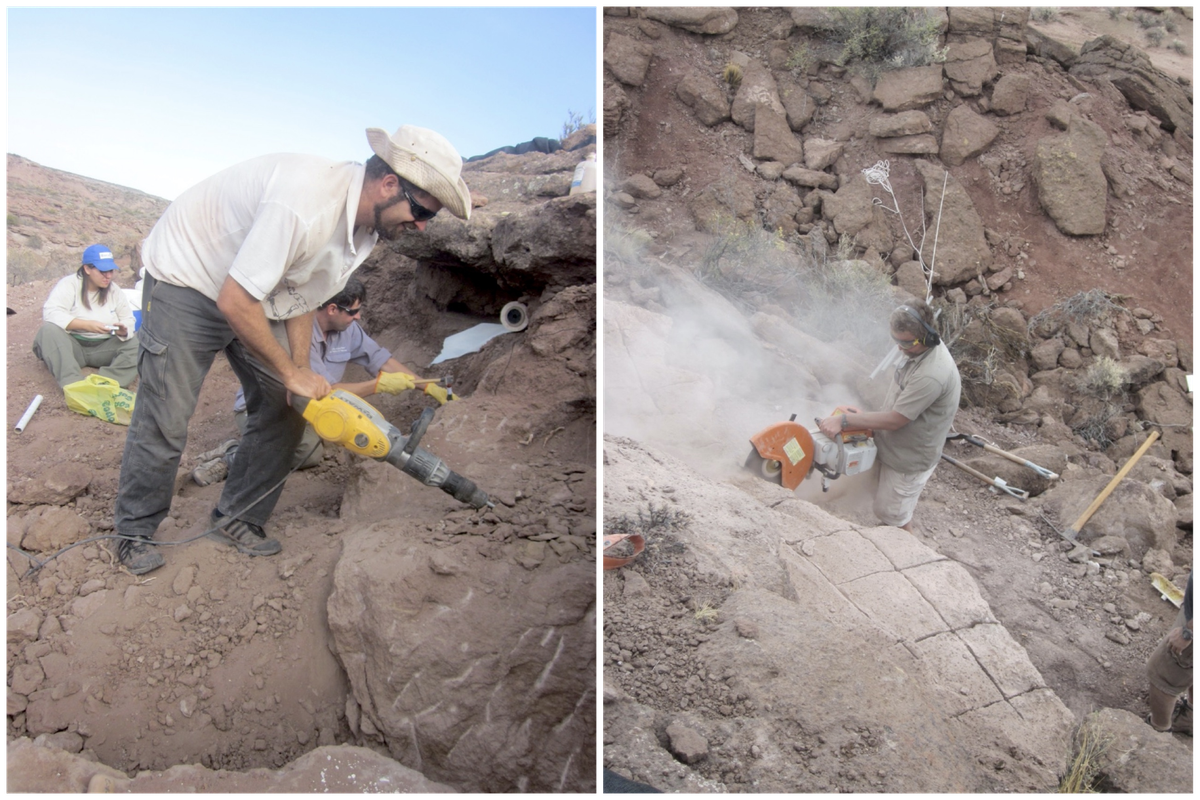
Carcharodontosaurs—the name refers to their serrated, shark-like teeth—ruled the dinosaur world, particularly in the Southern Hemisphere, for a good chunk of the Cretaceous, but most of the fossils we have of them are fragmentary. They died out about 90 million years ago, in the Late Cretaceous, and their position at the top of the food chain was eventually occupied by two other lineages: tyrannosaurs in North America and Asia, and abelisaurs most everywhere else. Although the three lineages evolved independently, separated by geography and millions of years, over time they all got bigger, with huge heads and puny arms.
“If you look at the early members of these three lineages, such as early carcharodontosaurs like Acrocanthosaurus, which is very similar in size to Meraxes, they do actually have somewhat longer forelimbs,” says Makovicky. He adds that, as overall body and skull size increased, “the forelimbs didn’t really follow pace… As skull sizes get bigger, their forelimbs are getting proportionally smaller.”
T. rex is, of course, the most recognizable example of this evolutionary course. “For over a century, the fiddly, funny, pathetic arms of T. rex have spurred all sorts of speculation and theories and crazy ideas as to why they were so tiny,” says Brusatte, who notes that the forearm of Meraxes, in proportion to its body size, is almost identical to that of a T. rex.
“Tiny arms were a normal thing for huge carnivores,” Brusatte says. “It’s still not clear why, but I suspect it is because the heads of these monsters became so big and strong that they took care of almost everything when it came to eating: grabbing and killing and slicing and devouring the prey. The big heads were a Swiss Army knife that could do it all.”
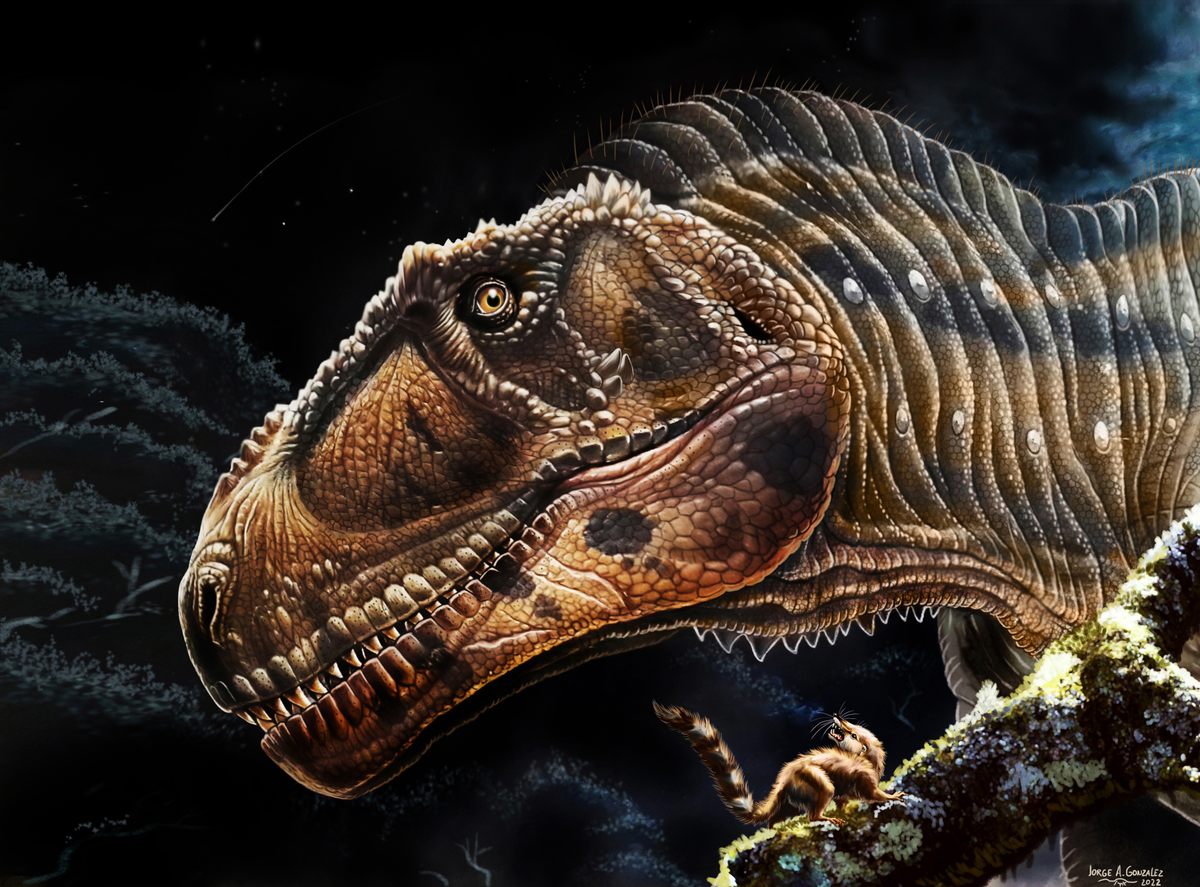
“We primates have an arm bias,” adds College of Charleston paleontologist Scott Persons, who was not on the Meraxes team but has studied predatory dinosaurs extensively and calls the fossil “a wonderfully fascinating and badass animal.” “We think arms are super important because arms happen to be important to us. But these carnivorous dinosaurs were adapting to maximize their bite.”
Meraxes had a roughly five-foot-long skull, and, while none of the teeth were recovered with the specimen, its mouth would have been full of serrated chompers that are a signature of carcharodontosaurs and other big, bitey Cretaceous predators. “If you have a mouth like that,” says Persons, “it’s better to seize things with your jaws than with your hands, and reducing the weight of the forelimbs meant that more forward-positioned weight could go into the head.”
Meraxes is particularly important as a specimen because it is so complete, and so well-preserved, including, says Brusatte, “the best forelimb of a colossal-bodied carcharodontosaurid ever found.” The quality of the skeleton fills in gaps in the lineage’s otherwise fragmentary fossil record.
Before Meraxes, Persons says, paleontologists were “really only guessing” at the arm proportions of many carcharodontosaur fossils found without forelimbs. Those estimates were often based on animals much earlier in the lineage, such as Acrocanthosaurus, which had substantial forelimbs: “Acrocanthosaurus could one-arm curl a Buick,” says Persons. The exceptional state of Meraxes, he says, confirms that the lineage was actually following the same pattern as tyrannosaurs and other large meat-eaters.
The quality of the Meraxes skeleton is all the more impressive considering what the team had to do to get the fossils from canyon to lab. Canale and colleagues immediately recognized the importance of the partial vertebra, and took a closer look at the site, near the top of a steep hill. “There was bone all around that hill,” says Makovicky. “It was a dinosaur graveyard.”
Bones from at least three other dinosaurs, all sauropods, were found close to Meraxes; Makovicky believes the animals died within weeks or months of each other, perhaps in a drought, but says there is no evidence to suggest they may have been killed in one sudden catastrophic event.
Finding multiple, well-preserved fossil skeletons is every paleontologist’s dream—but there was a problem. Hard sandstone capped the hill, with softer mudstone below it, and the fossils were right in between the two layers.
Getting through the sandstone was tough enough, requiring “a lot of jackhammer and rock saw work, and just plain old chiseling,” Makovicky recalls. In places, the mudstone layer had eroded away, leaving sandstone overhangs. It was there that some of the most important bones, including parts of the skull, were lodged. Traditional field prep methods involve working down to a fossil, digging around it and applying a protective jacket of wet plaster, during which gravity does much of the work. The resting place of Meraxes, exposed from below rather than from above, turned everything on its head. “You can’t just plaster something upside down,” Makovicky says.
Coauthor and team member Akiko Shinya, chief fossil preparator at Chicago’s Field Museum, came up with a solution, applying a layer of silicon to the upside-down fossils that allowed the plaster to adhere. With one obstacle overcome, the scientists faced a new challenge: getting the bones, now in plaster jackets, off the hill. The same steep, unstable hill they had hauled jackhammers and generators up now became a precarious descent with the precious and unwieldy cargo. A single jacketed femur weighed around 500 pounds, the massive hip bones probably almost twice that, Makovicky estimates.

Moving the leg bones was a slow operation of incremental advances, but the pelvis proved too big for the team. Eventually, Canale enlisted the aid of a local who had a dune buggy and managed to work his way through the difficult terrain to haul pieces of the pelvis safely back to camp. It took the team four seasons to excavate the bones, and years more of painstaking work prepping the fossils for study. Now, the process of understanding the full significance of this ancient dragon is finally beginning. Some team members, for example, are focused on studying its well-preserved—and surprising—feet. “T. rex feet are very slender—these are much more robust,” says Makovicky.
Persons notes the inside toe is “armed with an especially big, curved, and sharp claw,” reminiscent of another completely unrelated dinosaur. “This claw is not raised, as it is in Velociraptor, but it does appear to be starting down that evolutionary path,” he says. The adaptation reminds him of the modern cassowary, considered the world’s most dangerous bird because of its scythe-like talon and aggressive response when threatened. “Meraxes had evolved a killer bite but also a killer kick,” Persons adds.
Finding Meraxes and multiple partial sauropod skeletons at the hill of bones—likely just the first of many discoveries at the site—is important more broadly for paleontology, which has traditionally been dominated by a handful of wealthy, Northern Hemisphere countries. Makovicky notes that the expedition that discovered Meraxes is just the latest in a decades-long international collaboration led by Argentine scientists, and that the bones will remain in Argentina.
Australian paleontologist Bell believes the Argentinian dragon will also help to address another long-running geographic bias in the field. “Paleontology in the Southern Hemisphere gets overshadowed by what goes on in North America, and to some extent Asia and Europe. But to look at dinosaurs from the north is to consider only half of the evidence,” says Bell. “We got so much wrong in the past because of that exact reason.
“Now places like South America are a beacon for the future of paleontology,” he adds. “Big discoveries are going to be more frequently made there, and will have a more dramatic impact on the field. We probably haven’t even scratched the surface of what’s weird and wonderful about dinosaurs.”
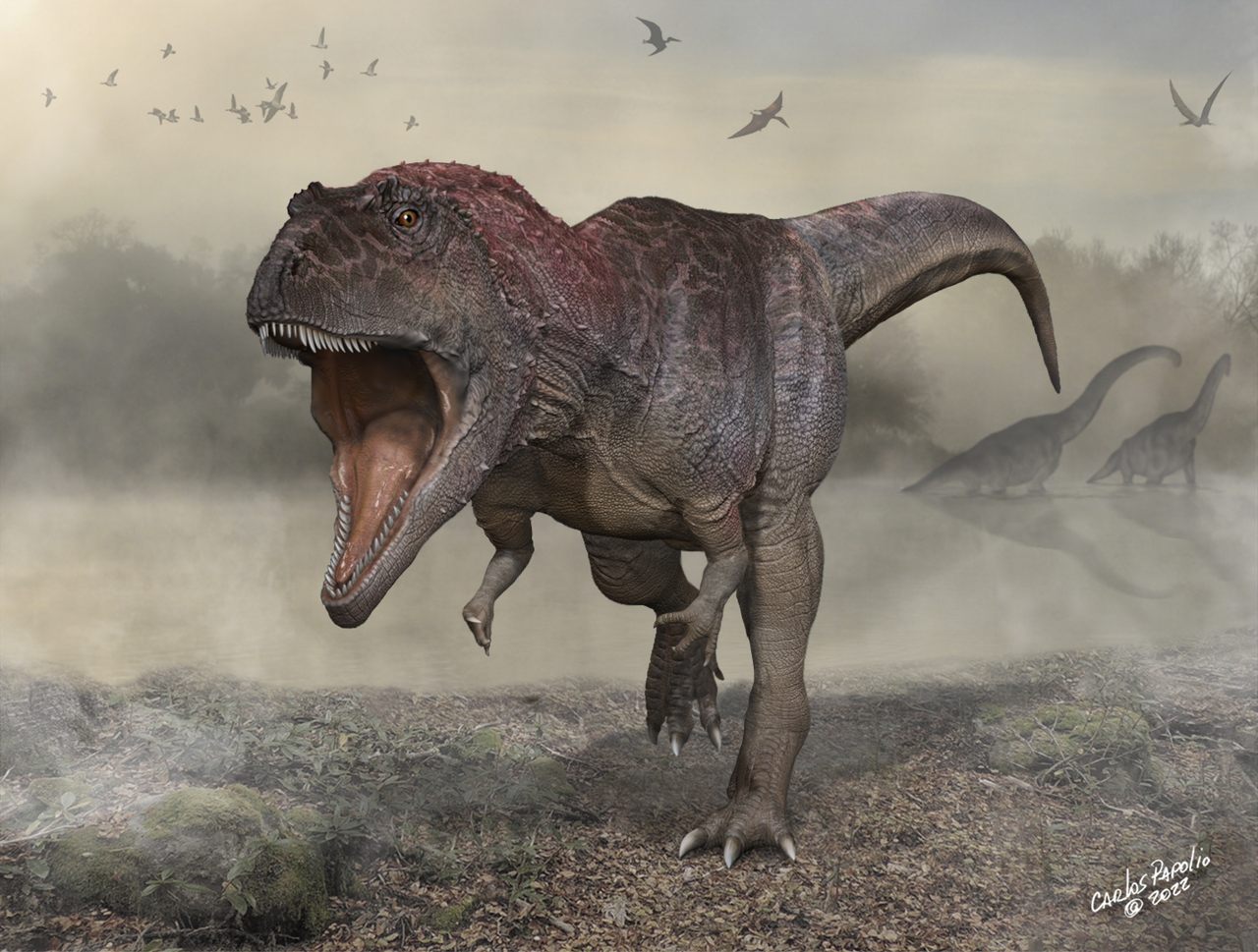

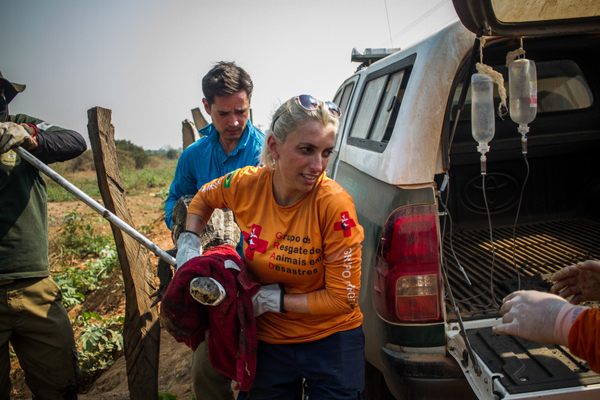


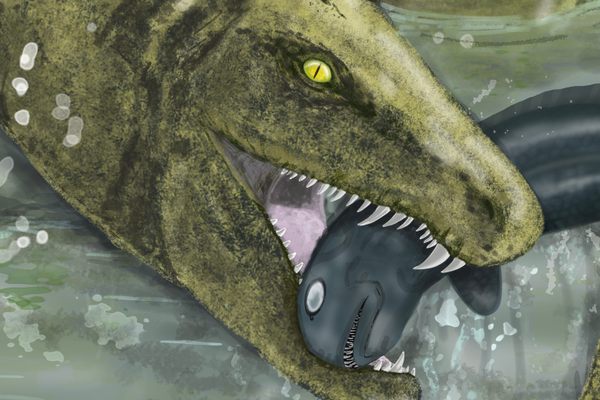












Follow us on Twitter to get the latest on the world's hidden wonders.
Like us on Facebook to get the latest on the world's hidden wonders.
Follow us on Twitter Like us on Facebook